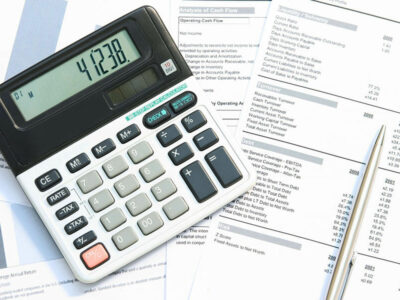If the child who qualifies you for this filing status isn’t claimed as your dependent in the Dependents section of Form 1040 or 1040-SR, enter the child’s name in the entry space at the bottom of the Filing Status section. Use the Married filing jointly column of the Tax Table, or Section B of the Tax qualifying relative Computation Worksheet, to figure your tax. You may be eligible to use qualifying surviving spouse as your filing status for 2 years following the year your spouse died. For example, if your spouse died in 2022 and you haven’t remarried, you may be able to use this filing status for 2023 and 2024.
- Generally, the qualifying person must live with you for more than half of the year.
- Or, get unlimited help and advice from tax experts while you do your taxes with TurboTax Live Assisted.
- If you qualify to file as head of household instead of as married filing separately, your standard deduction will be higher and your tax may be lower.
- A qualifying relative is typically a family member, and the relationship is not always biological—a sister-in-law could be claimed as a qualifying relative, for example.
Unlike a qualifying child, a qualifying relative can be any age. You and your 3-year-old child J lived with your parent all year. You are 25 years old and unmarried, and your AGI is $9,000. Your child’s other parent didn’t live with you or your child. Subject to these tiebreaker rules, you and the other person may be able to choose which of you claims the child as a qualifying child.
However, some taxpayers may see their refunds a few days earlier. Generally, in the absence of inconsistent evidence, a credible, sworn statement from the qualifying relative of his or her intent to relocate or separate would generally suffice to demonstrate what the qualifying relative plans to do. Relocation may result in extreme hardship if refusal of the applicant’s admission would cause hardship (for example, suffering or harm) to a qualifying relative that is greater than the common consequences of family relocation. When assessing extreme hardship claims based on relocation, USCIS focuses on how denial of the applicant’s admission would affect the qualifying relative’s well-being given the qualifying relative’s relocation outside the United States.
Who doesn’t count as a tax dependent?
If you qualify to file as head of household, instead of as married filing separately, your tax may be lower, you may be able to claim certain tax benefits, and your standard deduction will be higher. The head of household filing status allows you to choose the standard deduction even if your spouse chooses to itemize deductions. Even if the noncustodial parent claims the dependency exemption, the custodial parent can still claim head of household filing status, dependent care credit, exclusion of dependent care benefits, and the earned income tax credit. The custodial parent can also still claim the child as a beneficiary of fringe benefits provided by the custodial parent’s employer.
It can be either one of you who provides more than 50% of the person’s support, but only one person can get to claim the dependent. Each of the other persons providing support will need to sign a statement agreeing not to claim the dependent for the year. Whoever claims the dependent should keep the signed statements for their records. In some situations, the IRS has outlined special cases which allow a person to be claimed as a qualifying relative despite the requirements listed above. These include temporary absences and multiple support agreements.
IRS Qualifying Relative Tests
The term “parent” means a biological or adoptive parent of an individual. It doesn’t include a stepparent or foster parent unless that person has adopted the individual. You, and your siblings, S, B, and D, provide the entire support of your parent for the year. You provide 45%, S provides 35%, and B and D each provide 10%.
Hardship to Other Non-Qualifying Relatives
You can find information on IRS.gov/MyLanguage if English isn’t your native language. The IRS Video portal (IRSVideos.gov) contains video and audio presentations for individuals, small businesses, and tax professionals. On IRS.gov, you can get up-to-date information on current events and changes in tax law.. The facts are the same as in Example 1, except that Hunter is blind at the end of 2023. If your eye condition isn’t likely to improve beyond these limits, the statement should include this fact. Support provided by the state (welfare, food benefits, housing, etc.).
Qualifying Relative
However, if your spouse died on February 12, 2023, your spouse isn’t considered age 65 at the time of death and isn’t 65 or older at the end of 2023. If your dependent is a resident or nonresident alien who doesn’t have and isn’t eligible to get an SSN, your dependent must apply for an ITIN. For details on how to apply, see Form W-7, Application for IRS Individual Taxpayer Identification Number.
Part 3 of Form 8332 allows a custodial parent to revoke a previous waiver of the right to the exemption for the child in a future year. However this revocation does not take effect until the year following in which a copy of the revocation is provided to the noncustodial parent. For tax years prior to 2018, taxpayers were allowed to reduce their taxable income by a certain amount for each dependent claimed on a tax return.
Even if your spouse was born before January 2, 1959, your spouse isn’t considered 65 or older at the end of 2023 unless your spouse was 65 or older at the time of death. If you are preparing a return for someone who died in 2023, consider the taxpayer to be 65 or older at the end of 2023 only if the taxpayer was 65 or older at the time of death. Even if the taxpayer was born before January 2, 1959, the taxpayer isn’t considered 65 or older at the end of 2023 unless the taxpayer was 65 or older at the time of death.
Typically, the person with whom the children live with over half the year will be able to claim the dependents on their tax return. But there may be a separate legal agreement stipulating the other parent may claim the children as dependents. For tax purposes, a dependent is someone “other than the taxpayer or spouse” who qualifies to be claimed by someone else on a tax return. More generally speaking, a dependent is someone who relies on another person for financial support, such as for housing, food, clothing, necessities, and more. Typically, this includes your children or other relatives, but it can also include people who aren’t directly related to you, such as a domestic partner.
You may be held jointly and individually responsible for any tax, interest, and penalties due on a joint return filed before your divorce. This responsibility may apply even if your divorce decree states that your former spouse will be responsible for any https://turbo-tax.org/ amounts due on previously filed joint returns. Both of you may be held responsible, jointly and individually, for the tax and any interest or penalty due on your joint return. This means that if one spouse doesn’t pay the tax due, the other may have to.
You can claim someone as a dependent on your tax return if, according to IRS rules, they are a qualifying relative or a qualifying child dependent. A qualifying relative is a person who meets the IRS requirements to be your dependent for tax purposes, which can be your boyfriend/girlfriend, sibling, niece/nephew, etc. If someone is your qualifying relative, meaning they pass the qualifying relative test, then you can claim them as a dependent on your tax return. Depending on the age of the dependent as well as a few other factors, you may be eligible to receive the Child Tax Credit of up to $2,000 or the Credit for Other Dependents of $500. In most cases, a child of divorced or separated parents (or parents who live apart) will be a qualifying child of one of the parents. See Children of divorced or separated parents (or parents who live apart) under Qualifying Child, earlier.
Why claim someone as a dependent?
A child who was born or died during the year is treated as having lived with you more than half the year if your home was the child’s home more than half the time the child was alive during the year. The same is true if the child lived with you more than half the year except for any required hospital stay following birth. If you were a U.S. citizen when your child was born, the child may be a U.S. citizen and meet this test even if the other parent was a nonresident alien and the child was born in a foreign country.
The noncustodial parent must attach all of the following pages of the decree or agreement to their tax return. Your child normally lives with you during the week and with the child’s other parent, your ex-spouse, every other weekend. The other parent lives in your home with your child for 10 consecutive days while you are in the hospital. Your child is treated as living with you during this 10-day period because your child was living in your home. If, due to a parent’s nighttime work schedule, a child lives for a greater number of days, but not nights, with the parent who works at night, that parent is treated as the custodial parent.




